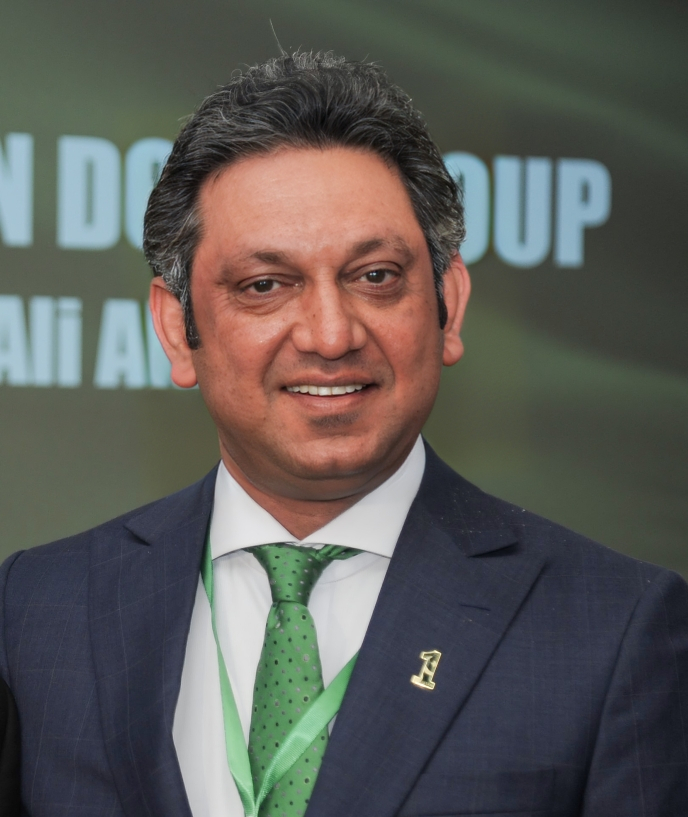
Faisal Aziz Khan, President Bol News: Myself Faisal Aziz Khan, welcoming you on this formal discussion on one of the extending crucial issues, not only for Pakistan, but the entire region, and that is Evolution of Education and Health Care in Pakistan. We have only 40 minutes for this session, unfortunately, but I would introduce here the highly regarded speakers of the panel, starting with Dr. Huma Baqai. She is Senior Vice Chairperson, KCFR and Associate Professor, Institute of Business Administration IBA Karachi, Dr. Marc H. Siegel, President Siegel Associates, Dr. Linda Zangwill, Professor University of California and Mr. Ali Shah, CEO of iPath (Pvt) Ltd.
Pakistan’s education system has evolved from the both Islamic and British historic roots, it has improved greatly in 20th and 21st century, but it still tends to rely too heavily to rote memorization and outdated teaching and examination methods. However, in recent years, Pakistan has adopted increasingly modern methods of teaching and examinations.
On the other hand, Islamic traditions remain very much alive in the society, whereas Civic has recently been introduced in school curriculum in place of Islamiat for religious minority population. Secondly, according to Global Youth Development Index published by Commonwealth, a measure which uses the domain of civic participation education, employment opportunity, health and well-being and political participation to gauge the progress of young people, Pakistan ranked only 154th of 183 countries coming below sub-Saharan African nations like Sierra Leone and Ethiopia. Pakistan has the highest number of out of school children worldwide after Nigeria. Approximately 22.7 million Pakistani children age 5 to 16 did not participate in education in 2017 as per Ministry of Education, Government of Pakistan.
According to Human Rights Watch, 32 percent of girls of elementary school are out of school compared with 21 percent of boys. By grade 6, only 41 percent of girls participate in education compared to 51 percent of boys, and by the grade 9 nearly 13 percent of young women are still enrolled in schools. Crucially, Pakistan devotes few resources to education in comparison with regional countries like India or Nepal or Bangladesh. In 2017, Pakistan spent only 2.9 percent of its GDP on education, far below the government official targets of 4 percent. On the other hand, studies have shown that Pakistan’s private sector health care system is outperforming the public sector healthcare system in terms of service quality, patient satisfaction. 70 percent of population being served by the private health sector.
However, as per the claim of the ruling political party of province of Sindh, Pakistan People’s Party 500 health institutes have been established in Sindh in last 14 years of their government. Not really sure about the accuracy of this claim but we can see some visible improvement in the health sector at least. There are multiple other aspects and challenges associated with the educational and health system in Pakistan like unemployment and other many more. I would like the panelists to enlighten us on this and I would request Dr. Huma Baqai to give her opinion.
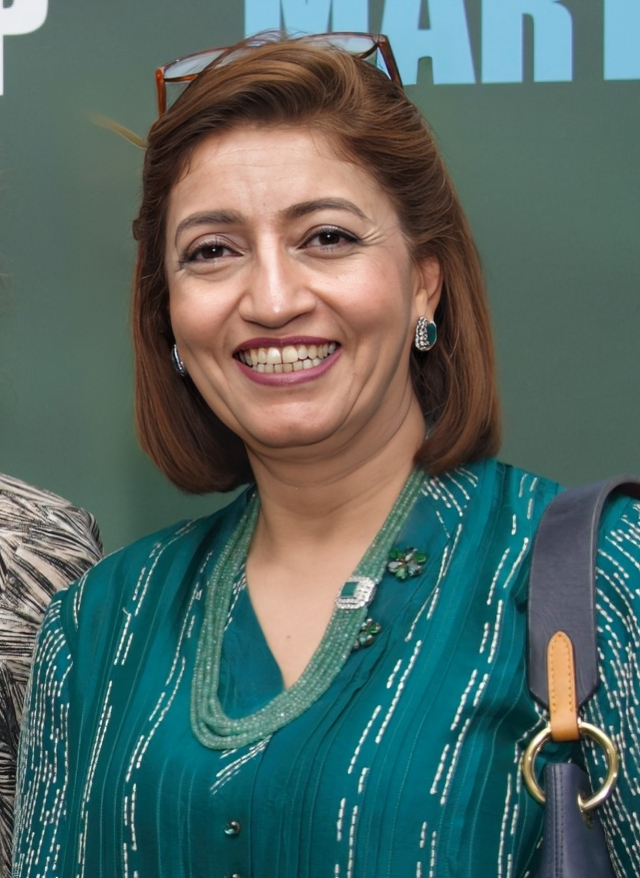
Dr. Huma Baqai Sr. Vice Chairperson KCFR: Thank you so much. I’m sitting at Pakistan Pavilion and I hate to paint a grim picture. I would like to say things are nice, I would like to say that we’re doing well, but thank you Faisal for giving those statistics, but probably I will dive into it as to why has this happened to Pakistan? I’ve been associated with education for the last 25 years, what has happened to education is that I think, greed driven capitalism in Pakistan has destroyed education, where gradually we turned education into a privilege and not a right and more so, how we allowed the private sector to take over the responsibility of imparting good education, and the public sector was left to deteriorate to a point where now it’s almost turned into a joke.
I’ve been associated with a public sector university for last 12 years and then I moved on to a public sector university which was run like a private university, and that is why one is where degrees are turned out which are not worth the paper they are written on, and other is called an island of excellence in Pakistan. But can we get on with this? Because what the percentage of private education is, it’s like a drop in the ocean, and what the rest of the country is left to is institutions, that are imparting absolutely compromised education. Is it a function of money? It could be, because we allocate very little money to education, but what is perhaps even more interesting is, that we don’t even spend what is allocated to education, and what is spent is spent in a way where it is not benefiting the masses, the people.
So when I talk about problems of Pakistan, the thing that comes to my mind immediately is that how elite capture of policy making has turned it into a state which will only cater to the elite. And as a result, the middle class and the lower middle class, when looking for upper social mobility, for which education is the only tool, will actually go to any lengths to educate their children in schools and colleges, which are very expensive, even in Pakistan. So I know families who sell out their property to put their children to school. So that is one aspect that I wanted to speak about, I think it’s greed driven capitalism that has done this to the education and when you leave a subject like education to the markets, markets work for profits. Pakistan is a country where education is a need and we need to have a need driven strategy to handle it.
The second thing that I want to sort of really come up on is, that while we were doing this, we also commodified education. So we commodified education, it became a commodity that would sell, so you had mushrooming of institutions that were giving degrees in business and IT and entrepreneurship, which is the new buzzword, and we stopped teaching our people history and literature and social sciences, and then we said why is there so much extremism in our society? There’s so much extremism in our society because we stop lubricating our education with subjects which allowed people, which allowed education, which humanized education if I may say so. And then, we have been unable to relate imparting of education and coming up of universities and the deterioration of the public sector to the demographic explosion that Pakistan is experiencing.
We’re the fifth largest country in the world, these are people that are counted, we have huge numbers that are not a part of the census, and they’re not even counted, nevertheless, there are children who are out of school and will grow up like that. So the problem is a horrifying because we have people who are not going to schools, and when we have people who are going to schools are now being imparted good education, and if you compare it to what is happening globally, the picture is even more grim because on the global front here at Davos, people are talking about education 4.0 which is supposed to match with the fourth industrial revolution. And we’re talking about teaching students critical thinking, problem solving skills, and they say that if you give that skill to the children, it will actually make a lot of good economic sense, it will add something like 2.5 trillion dollars to the global economy if education is done that way
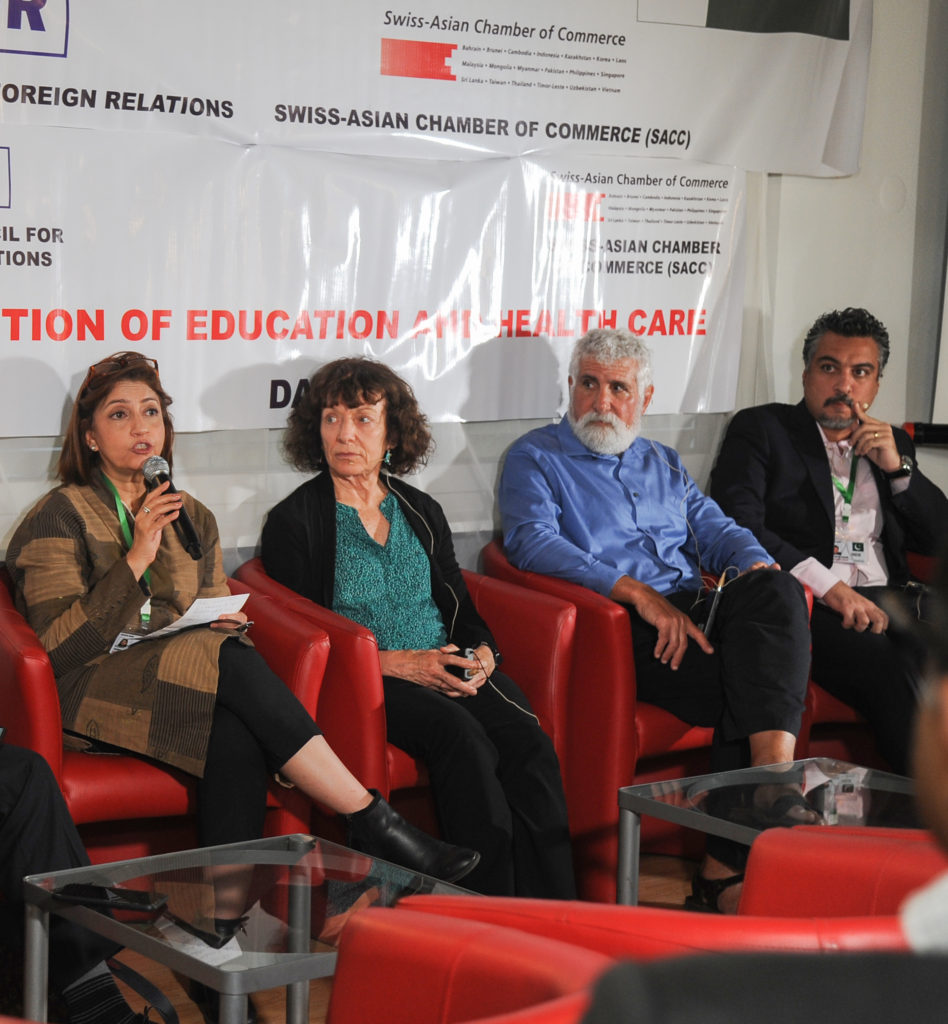
Now people are thinking about how education is done, we are still struggling with trying to educate everyone. Our literacy levels are low and our literacy levels are counted when a person can sign his or her name; that’s not literacy. I think the way forward is a multi-prompt strategy where we realize that if Pakistan wants a tomorrow, there is no way we can continue with the neglect that is happening right now, and we need to have an approach where we can educate our masses, and not have affirmative action or interventions that are for people, for example if you have TCF, you have private initiatives, you have philanthropy where education is supported but largely nothing is being done up for the masses, and I think that needs to change. I’ll be very happy to answer questions but right now the way education is in Pakistan, it’s horrifying and what is worse is that post-pandemic, the girl child has suffered more because the girl child who got out of school never went back, so they’ve not gone back to school. So I think this often that if there is one emergency that Pakistan needs it’s an educational emergency. I’m not going to comment on health care, but ladies and gentlemen, it is as bad, and you need to connect the dots to the demographic explosion because you can make good universities, more universities, more hospitals but somehow the population growth is horrifying, Pakistan, still is about 3.5 children per women which is one of the highest in the world, thank you so much for your time and attention.
Faisal Aziz Khan, President Bol News: Thank you so much. The situation is basically embarrassing. I request Dr. Linda Zangwill your say on Pakistan’s education system please.
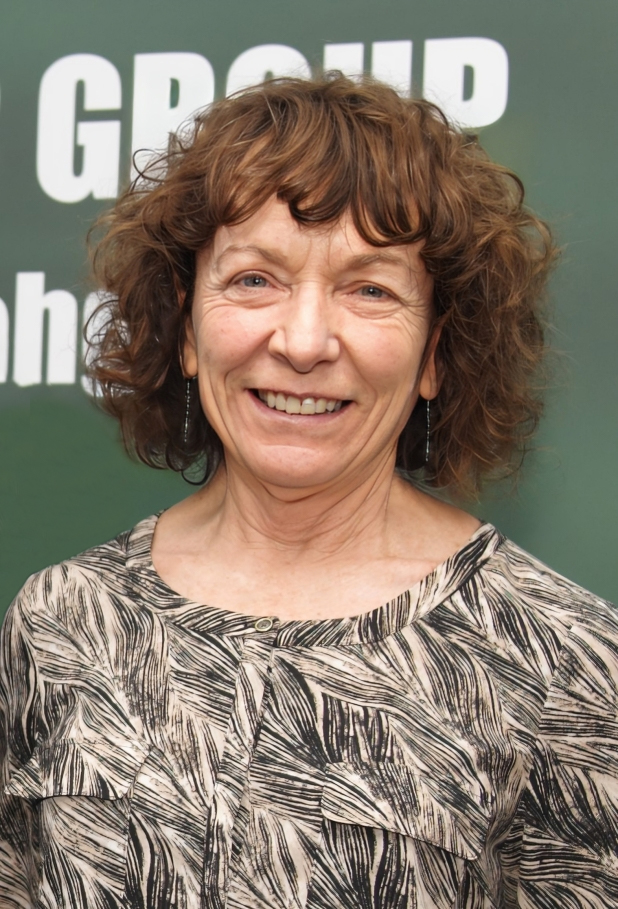
Dr. Linda Zangwill, Professor University of California: I feel like really not qualified to talk about the education system but I was going to say a few words about health care. I’m a Professor in the School of Medicine at the University of California, San Diego and I’m in ophthalmology in a very sub-specialty area. So my expertise is not on health care systems or on health care administration, but I’ll just say a few things. At a higher level, I think the situation demands some technological possibilities or solutions, another revolution that is discussed at length in Davos is Artificial Intelligence, and both, it is transforming healthcare systems and it’s not only in well-to-do urban settings with a lot of high-tech, that’s one thing that is happening. It’s helping clinicians make decisions, who’s going to get sepsis in the hospital etc. But the other way, the other application is to the underserved areas that if you can have a smartphone, maybe not even connected to the internet but with some software on it, and are examining patients for example I look at eye disease, and the first FDA approved which is the agency in the US that approves drugs, and now they approve software, the first application for FDA approved AI device was for screening for diabetic retinopathy by a photograph. So diabetes is a problem everywhere and diabetic retinopathy is a huge blinding disease, this is just one example but to move this to primary care, to move it to the rural areas, serve the underserved areas or widely with an expertise, that is much greater than the personnel, perhaps, that are available in these underserved communities. We’re doing this in the United States which has a tremendous underserved communities in the healthcare system even though we’re very wealthy nation. I’m sure in Pakistan the problem is even larger, but to develop systems that could help the clinician and have, perhaps, non-physician healthcare workers doing the triage. This person does not need to see an eye doctor, this person really should see an eye doctor soon and to really try to bring the health care system, to be able to manage some of these patients, to manage some of these communities.
I know we heard earlier this morning about a lack of cell phones, the internet and things like that, so there’s ways of doing this without all the technical requirements. So that’s just one thing that’s really happening with the health, it also exploded because of Covid, where lots of people were not getting to the doctors, not seeing their health care worker in person, and that’s another way that we can perhaps build infrastructure, and it doesn’t have to be all high tech, some of it can be high-tech to be able to define healthcare to the many underserved people in Pakistan. There’s a lot of concerns about it, there’s a lot of problems that have to be resolved, but I think they are doable and I think the benefits of this we’re seeing. Headlines in the US was that Google was bringing some product that used to screen for eye disease for communities and they’re going to make it affordable, they’re going to make it accessible to communities that are underserved worldwide.
Faisal Aziz Khan, President Bol Media Group: Thank you Dr. Linda Zangwill, now I would like to invite Dr. Marc H. Siegel. Sir, how do you see the educational system of Pakistan?

Dr. Marc H. Siegel, President & CEO M Siegel Associates LLC: I’m going to talk about from different perspective, I’m in a think tank of some of the largest supply chain companies in the world, mostly American and European, and I also teach in an MBA program, that’s focused on supply chain management. One of the things that is a problem, if you think that the problem in Pakistan is that education has been commoditized, supply chain companies have monetized humans. They really don’t care what you have to sell or about the person who’s selling it, they’re looking for whatever is the cheapest they can get something for. But key to that, is also that they want to work with people who can minimize their risk as much as possible. Particularly any blowback risk to the company itself by an event that will take place that have hurt their reputation. So in that space, Pakistan, every time I’ve been there I hear people brag about we produce this many engineers, and we have this many programs, and we have this many people in high tech. They’re everywhere, these companies are looking for those skills in any country they can get it and the big selling point for them is can they operate in your country, and can you minimize their risk as much as possible in terms of quality of service, potential for business disruption, and damaging their reputation.
So one of the areas that I think really needs to be developed to make Pakistan more competitive with all these other countries, that are offering the same thing, is to look at how to to develop more after somebody graduates from university, or even when they’re going through their first degree, if you’re doing a degree in engineering, and you’re doing a degree in programming, and in coding that you also co-mingle that with business skills of how, if you’re trying to do a startup give the person some entrepreneurial skills, give them the business communication skills, and also very important give them the skills that they can actually go to these companies and pitch their technology, and pitch their company, from the perspective of we can deliver you that quality. We can avoid disruptions that will hamper your operations because remember, they’re getting maybe one little piece from here another piece from another country. They can’t afford down time at all and if I can’t share with you some of the games they played during Covid but they were cutthroat and really put people’s health in danger in developing countries to make sure they still got their stuff in their supply chain. To be able to pitch to them that yes we have the business scope, yes Pakistan is a high-risk environment but we also know that if you can come and operate in this country, we’ve been trained in the key areas of governance, compliance and risk management that you will have the level of comfort to be able to do business in Pakistan.
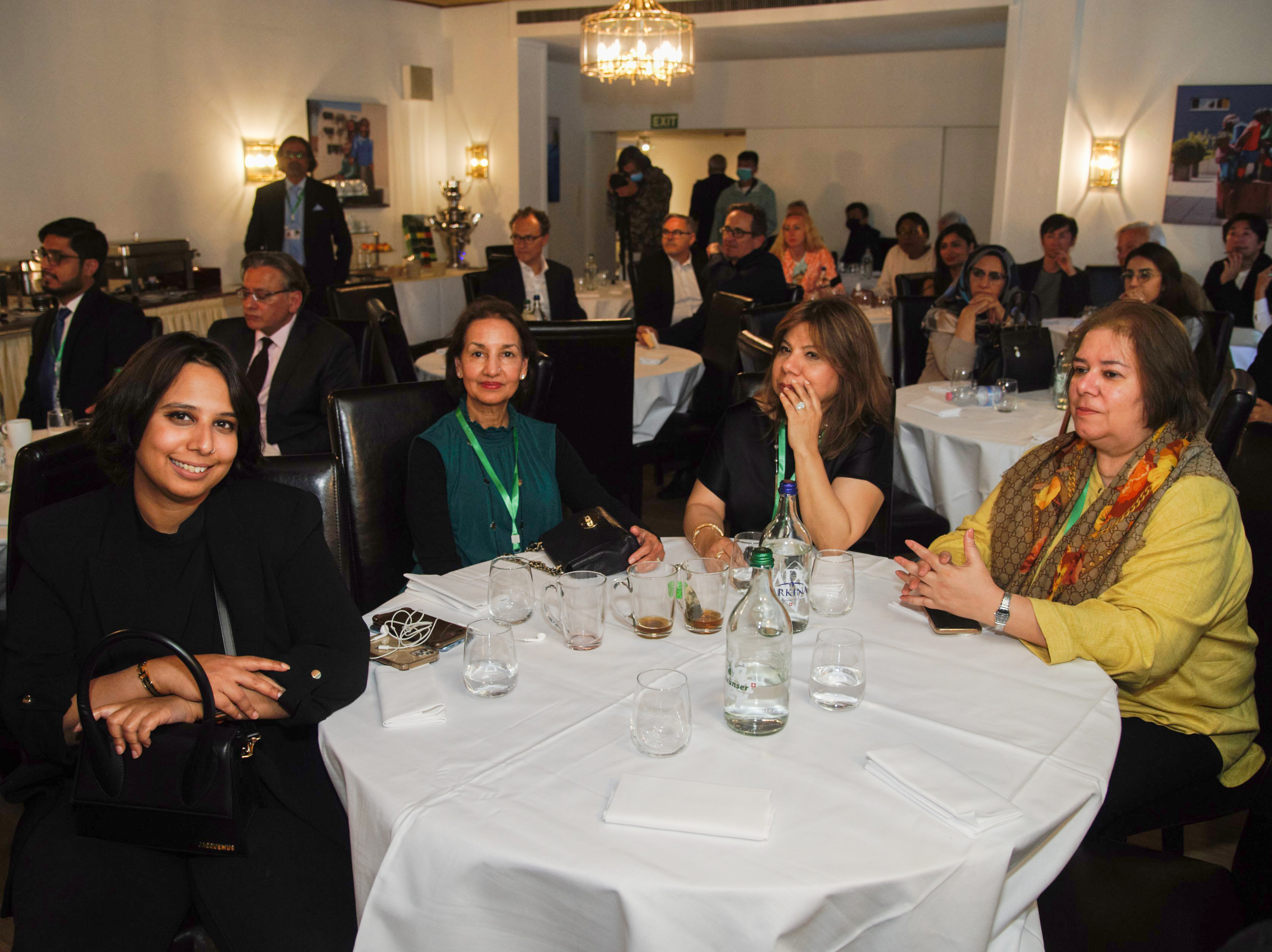
Just quickly before ending, I want to shift gears because after listening to Huma and Linda get their talk I’ve been working in Moldova, working with the Ukrainian refugees since March, and two programs that we’re setting up made me really think about how applicable these would be, because Moldova is an incredibly poor country. They’ve been flooded per capita with more refugees than any other place and we’ve had to think of how you come up with incredibly cheap solutions to do outreach to all these people, who have been dispersed into the countryside. So Moldova is 75 percent rural and about 90 percent of the refugees are dispersed in this rural environment and if you think your roads are bad, go visit Moldova and you’ll be proud of your roads and well, two programs we set up that seem to be a slight twist on what other people are doing. Instead of just doing remote learning, we’re setting up classrooms where we’re taking a teacher who is a refugee, and the kids sit in a classroom environment, instead of spending all the money on laptops for everybody, it is one laptop per class, one projector, one screen and one teacher who is in the classroom with the students. So they have the social environment, and then they’re being able to tap into well-developed resources for remote learning, having a teacher there to help them and it’s incredibly cheap. We even came up with a bizarre scheme with Amazon to get free computers into classrooms, so that’s one of the things we’re doing and then the other thing again because you have all these people dispersed out in the countryside and they have very little access to healthcare, the people who actually are living in the countryside have little access to healthcare, it’s matching them with companies who do remote healthcare, and have developed those tools already matching them with people in the universities, and in the medical system so they can do the local culture and the local language skills and by marrying those two things together, this is what I’m setting up and going after. Hopefully that pushes more resources out into the countryside, and takes advantage of, in some ways these companies that have developed the software, who are interested in the long run of giving it away for free at first, but then working as a way of developing a commercial venture. So that might be two things that are possible to copy and to try to move things out to the countryside.
Faisal Aziz Khan, President Bol Media Group: Thank you Dr. Marc Siegel. Mr. Ali Shah we have only 10 minutes for your remarks.
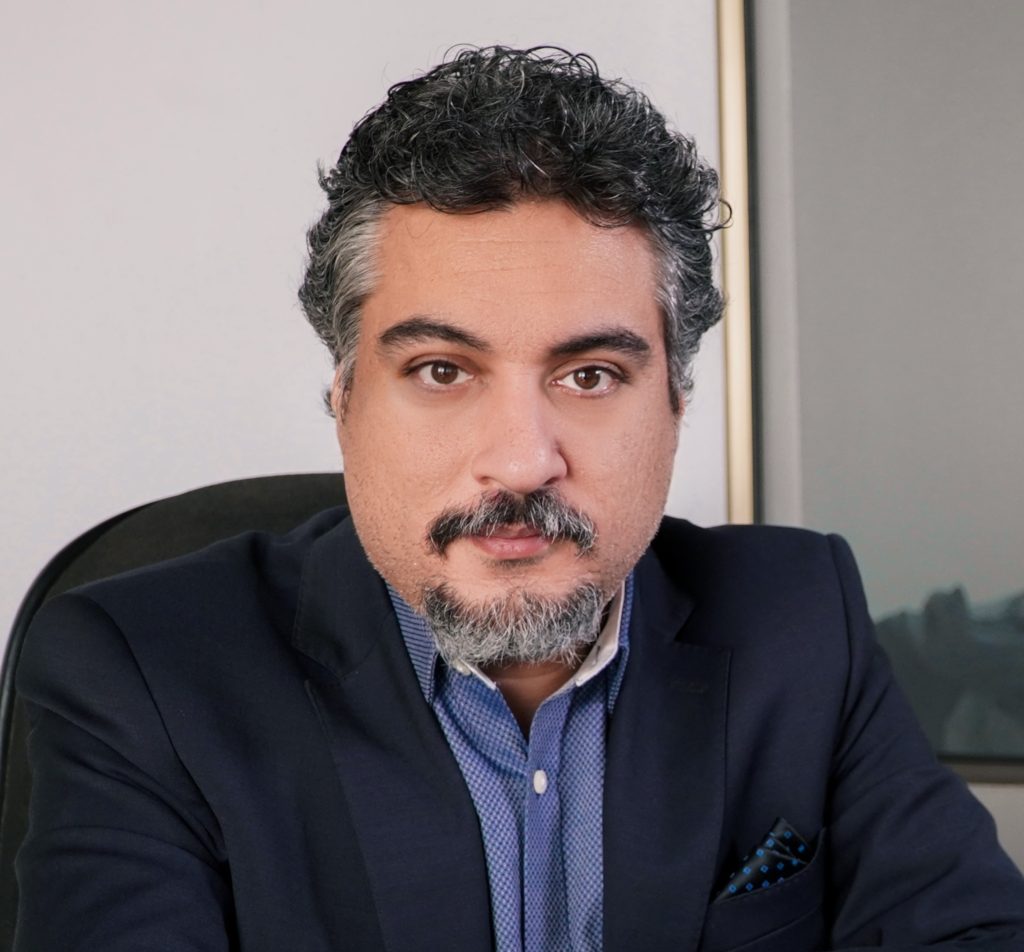
Mr. Ali Shah Asani, CEO iPath: As a technologist, I look at things how we can solve problems through the use of technology, and what we’ve all learned in the past two years is the biggest digital transformation revolution of the 21st century was not led by a technology, or company, or people it was led by a virus. When having that technology at that time starting from healthcare systems healthcare management systems, getting people into remote working places, making things accessible to them was extremely important. Now what we’ve done is, we looked at a problem, particularly to solve in the North American market, and that was basically the interoperability of healthcare data, so this isn’t a problem for Pakistan. When we talk about Pakistan we’ve set up so and so many hospitals under some programs, so and so many clinics will be set up, but when you look at a very developed market such as North America, so as to speak under the impression, there are very interesting findings as far as healthcare data interoperability is concerned.
So in the US, what we found was healthcare networks don’t share data with each other, 80 percent of all serious medical errors involved were during miscommunication, during care transition. So we’re talking about one patient being transferred from one facility to another, but the discharge summary or the clinical continuity of care documents weren’t properly filled out or it was not available to the other healthcare system which resulted in a malpractice. Then we found out that 3 out of 10 lab tests in the US are repeated lab tests, just because people don’t have access to that data. If someone has type 2 diabetes for example, or if a doctor has written a test for someone, and the same patient basically goes to another healthcare provider, the other healthcare provider has no access to that data. So what eventually happens is they reorder the lab test, now this adds up as a significant cost to the government, as well as for the insurance companies. Then we found out that only 3 out of 10 individuals in the US have access, either direct access or indirect access to their medical records, and even if they have access, 1 in 4 people have to reiterate their medical history to the health care provider again. So in the US when you go to a doctor you are filling out forms, you are taking your medication statement, and you are using your memory to tell them. So doctor told me this about my medical condition and these are the medications I’m taking, so it is actually in the best effort of the patient to communicate all this information to the healthcare provider, and what does it lead to, basically 20 percent of malpractice cases involve miscommunication, or a delay in getting the information available. When you’re looking at the North American market, you have the Silicon Valley, this is where technology gets born and evolved, and yet this is the country where there is a serious healthcare interchange crisis.
So what we did, we basically built a platform it’s called My-MediPort and we tried to solve the problem from multiple angles, so at first we basically gave patients access to their medical data under the ONC regulation. Every patient basically has the right to get access to their medical records. Based on that, we partnered with major EHR providers, so in the US, luckily if you partner with seven EHR providers, you basically cover 80 percent of the market. So we partnered with them, we provided access to patients, we developed the My-MediPort application and then patients are basically able to integrate all their data together. So if you’re visiting multiple healthcare providers and your provider is listed onto our network, you can directly sync all your data into one place, and this isn’t two or three different records that you’re managing, we integrate all that data in one single view, but this is only solving the problem from the patient side.
From the health care side, think of it from the perspective that if you’re visiting a My-MediPort enabled healthcare provider, all you need to provide is your basic demographic information and social security. The doctor would be able to search for that medical record through our platform, get it from multiple sources, integrate it together, and basically get an integrated view of the entire medical record. So what we’re doing, we’re saving time, we’re saving lives, we’re trying to avoid malpractice, due to miscommunication. We’re making sure that critical healthcare information is available to the healthcare provider, and of course it also helps the insurance companies, when it comes to claims and so on and so forth.
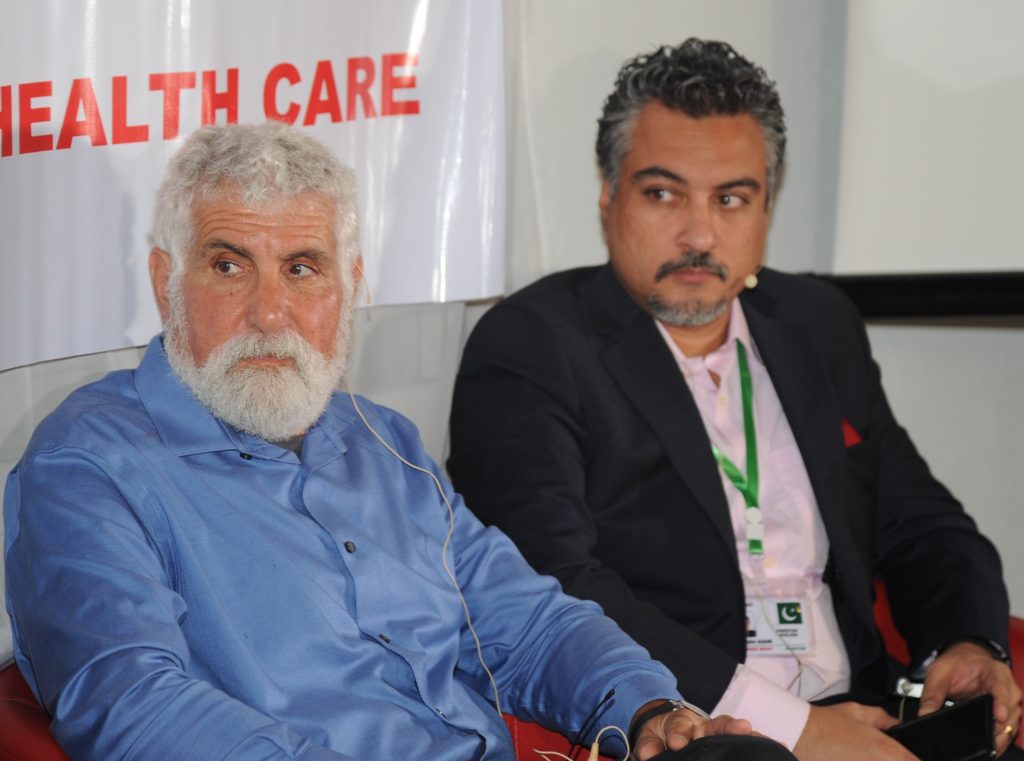
The other side is basically the data and the artificial intelligence. So given the amount of data, what we can do is we can run pretty interesting analytics on it, so you can say that if someone develops Type 2 diabetes at 40 years of age, we can predict, to a certain degree, what is the possibility of this person developing high blood sugar, high blood pressure, around the age of 60 65, so we can we can give you that percentage. Secondly, as far as COVID is concerned, drug development, vaccination trials, study of adverse drug reaction, the time to market for a drug has significantly reduced, the reason being the Spanish flu came out in 1918 in 1968, we had the Hong Kong virus, but from 2002 to 2022, we had H1N1, SARs, MERS and COVID. So the time for every next pandemic is shrinking down, we can’t wait for the next 50 years come waiting for the next pandemic, we don’t know what’s going to happen in the next five years.
Now coming into the Pakistani perspective, we look at healthcare information and healthcare data, now think of it as a use case, the need of the hour for the Pakistani market right now is a National Electronic Health Record platform. There are countries in the world who have developed brilliant National Electronic Health Records, you have Australia which has built My Health Records, and you have Turkey which has implemented a brilliant National Electronic Health Record platform. So what we are offering to developing countries is that we can develop a National Electronic Health Record. What we mean to say with that is, we can integrate data coming in from any number of hospitals together, bring it into our platform, and then integrate it together.
So think of it this way in Pakistan, where someone is incapacitated, somebody brings them to the ER and they have the doctor, the caregiver has absolutely no idea on the allergies, conditions, any procedures, medication statements of that particular person. We are proposing a platform where you only need to provide a Computerized National ID card (CNIC), the health caregiver can scan it using our platform, we can fetch the entire clinical summary of that patient, and then the healthcare provider can take an informed decision and save lives. So when we started this in the US, we were connected with more than 61000 healthcare touch points within the US alone, and what we’re doing in Pakistan is along with the Sehat Card, which is a brilliant initiative for providing health insurance to the Pakistani people. We’re also offering this platform that we can digitize all this data, bring it to one place, so that the value of the common man’s life is higher than what it is today, we can give them that value. So that is basically our input from iPath and our My-MediPort platform.
Faisal Aziz Khan, President Bol Media Group: Thank you so much, just two questions I have two minutes to end, just two questions.
Question: This is interest of the patient and interest of the country but not in the interest of the institutions. They lose their targets, all diagnostics and all those kind of things, so how do you see overcoming this hurdle? If this happens, this will be a game changer.
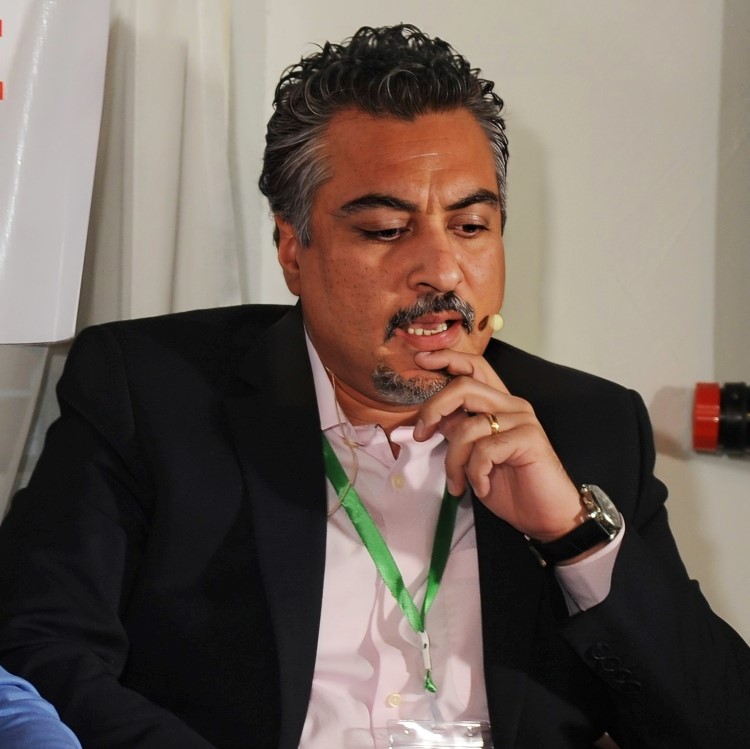
Mr. Ali Shah Asani, CEO iPath: I think bureaucracy is a problem everywhere, so it’s not just a matter of the Pakistani bureaucracy, it’s a matter of the North American bureaucracy as well. To get an insurance claim in the US is not easy for healthcare, you need 10 to 15 days, and you’re spending around 200 to 250 dollars just to get your medical record out from the healthcare network, and then processing that. Apparently what happened in the US was the bureaucracy was broken by the government, so basic access to clinical summaries and patient discharge summaries were allowed to be given to the patients.
I think on a policy level or on a regulatory level, if our government also allows basic access of this information then third-party developers like us can actually tap into that information and make it available to healthcare networks. Everyone is selfish about that data and there is a lot of regulations as well, which are involved in it. So speaking about our experience, you know the first thing we had to go into was HIPAA compliance, HIPAA is an act, once HIPAA compliance was made, it went into a high trust certification, once high trust was done we went into a SOC 2, and once SOC 2 was done the HR basically asked for a GDPR compliance. So for us we basically came down meeting all these compliance requirements just to make sure that the bureaucracy is satisfied, that we can get access to this information, and when we had access to this information and we started returning them value against it, that was basically where the win-win was for us.
Question: So my question is to Dr. Huma that how you see this twist, if we compare public and private sector in education sector from the last 30 years, might be at that time 20 percent was private sector and 30 percent public sector. Right now, how do you see we are moving ahead.
Dr Huma Baqai Sr. Vice Chairperson KCFR: I’m a great believer of a private sector coming into education because what is wrong with the public sector; there is no accountability, there is no transparency, the bureaucracy is killing it, and they are not working for profits, having a model which is not profitable in nature is not sustainable. So what I firmly believe in is a public private partnership where in a country like Pakistan, we need to introduce a voucher system and a community involvement into the education of their children, which will allow parents to emerge as the monitors and the people who will hold the administration accountable. These suggestions have been on the table. But I think what lacks is a focus, we are still not focused towards improving education and we don’t see the missing link between the revival of economy and investing in education. How an economic turnaround in this country cannot happen, no matter whether you talk about sport-led growth or whichever growth that you want to talk about unless you impart skill, and knowledge, and tools of social upward mobility to the average person, and that is not happening. We perhaps need a multi-pronged strategy for that, so I’m not averse to privatization of education, I want a public private system but where there’s corporate social responsibility, there’s accountability and we bring in more stakeholders into the situation, that’s how I see it.
Faisal Aziz Khan, President Bol Media Group: Thank you so much, there are multiple takeaways from this discussion, I thank you Dr. Marc Siegel, I thank you Dr. Linda, Dr. Huma and Mr. Ali Shah, thank you very much.



